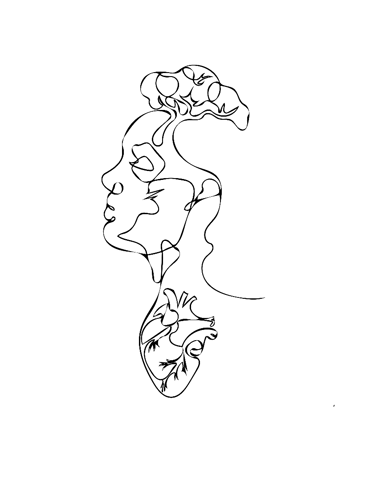Boundaries and Attachment: The Missing Piece in My Relationships
Attachment theory has long fascinated me. It promised a way to understand my emotions, my triggers, and my recurring patterns in relationships. If I could decode my attachment style, I could mitigate my anxieties and build better connections—or so I thought. Yet, as I reflect on my relationship with Jana, I realize my struggle wasn’t just about attachment. It was about boundaries.
The Cost of Weak Boundaries
Here’s how my lack of boundaries showed up:
I feared disagreement, so I suppressed my opinions.
I constantly sought reassurance, even in subtle ways like texting her just to get a response.
I accepted last-minute cancellations without expressing how it affected me.
I abandoned my own plans to always be available for her.
I bent over backward to please her, believing that if I was "good enough," she wouldn't leave.
The irony? These very actions pushed her away. Without boundaries, I wasn’t showing up as my authentic self—I was just a version of me I thought she would like. And that made our connection fragile.
Overthinking and Emotional Chaos
Anxious attachment and overthinking fed into each other like a toxic cycle. If she didn’t text back immediately, I spiraled: Did I say something wrong? Is she losing interest? I analyzed every message, every pause, every emoji—or lack thereof. When she canceled plans, my brain went into overdrive: Was she really sick, or just avoiding me? Should I ask? Would that make me seem needy?
Overthinking didn’t give me control; it gave me anxiety. And worse, it made me act in ways that weren’t true to who I was.


The Fear Behind the Pattern
Looking deeper, I realized my weak boundaries stemmed from two things: a deep fear of abandonment and a need for control. I didn’t trust that I could handle rejection, so I avoided anything that might lead to it. I thought that if I could predict and plan for every possible outcome, I could protect myself from pain. But the truth was, I had no control over how she felt about me—and my attempts to hold on tighter only made her pull away.
The Wake-Up Call: Learning to Set Boundaries
Understanding my attachment style was useful, but it wasn’t enough. I had to learn how to set and enforce boundaries—something I had never done before. Boundaries aren’t about controlling someone else; they’re about honoring your own needs.
Here’s what I realized:
Boundaries don’t push people away; they create healthy relationships. If someone leaves because you enforce a boundary, they were never meant to stay.
Saying “no” is not rejection—it’s self-respect. If a person truly values you, they will respect your limits.
Communicating needs doesn’t make you needy. It makes you honest. If someone isn’t willing to meet you halfway, that’s a sign—not a failure.
Moving Forward: From Fear to Confidence
I used to believe that love meant sacrificing for the other person. Now, I know that love requires balance. I’m learning to speak up when something doesn’t feel right. I’m learning to prioritize my own well-being. And most importantly, I’m learning that I am whole on my own—I don’t need validation from someone else to feel worthy.
If you struggle with anxious attachment, overthinking, or boundary-setting, know this: it’s not about changing who you are. It’s about respecting who you are. Because real connection starts when you show up as your true, unapologetic self. A journey that was long and difficult for me.
"I wasn’t treating Jana nicely; I was being needy."
I had always considered myself kind and accommodating in relationships. In reality, I had no boundaries. I prioritized Jana’s needs over my own, rearranged my life to fit hers, and avoided conflict at all costs. I mistook this for love, but in truth, it was fear—fear of losing her, fear of being alone, fear of not being enough.
"Instead of being honest about my insecurities, I pushed her for reassurance. Instead of saying, ‘I don’t feel valued when plans get canceled,’ I silently accepted it and let resentment build."


